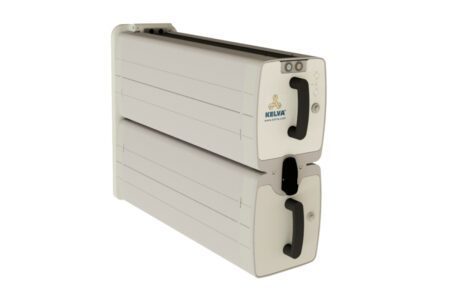
Web Cleaning for Film and Foil
Special web cleaning solutions for eliminating dust and contaminants from fragile and highly static foil and thin-film surfaces.
In plastics, film and foil production and converting, especially for food, medical or technical packaging applications, there is no way around web cleaning, even if cleanroom conditions already prevail in production.
The reason being the inherent sensitivity of these materials to contamination, which can compromise product safety and integrity. Therefore, thorough web cleaning ensures compliance with stringent quality standards and regulatory requirements, safeguarding the final packaged products and maintaining customer trust and satisfaction.
Why 100% dust removal is crucial in film and foil production and conversion
As soon as plastic material web surfaces get exposed, after unwinding for example, they can be contaminated due to static charge or by environmental particles in the air, e.g. when paper, cardboard or other materials with high dust load potential were processed in the same location.
Dust and debris particles, even those seemingly insignificant, can settle on the material, leading to jeopardized product quality during converting and finishing. Serious non-compliance with legal standards, resulting in product recalls and damage to the company’s reputation as well as high costs and losses are the consequences.
Web cleaning will guarantee safe operation and provide healthy working conditions. Production efficiency will improve through significantly decreasing downtimes, maintenance costs and product rejects.


Choosing the right web cleaning technology for film and foil
Plastics, film and foil material can be cleaned excellently with both contact or non-contact web cleaning systems. To solve dust problems in narrow and mid-web production of those, contact cleaning mostly satisfies the high cleaning performance requirements on one or both sides of the material.
However, the decisive factor is the web speed at which the production machine is running. For contact web cleaning, the limit is up to max. 400 m/min. For speeds higher than 400 m/min, the KELVA non-contact web cleaning systems are the right choice. They are ideal for large web widths up to 10’000 mm, a variety of web tension settings and high web running speeds.
Using non-contact cleaning for foil and thin film
Due to no contact with the web, there is no danger of damage on the web since the material remains untouched. There is also no interference on web guiding or web tension. The compact and industrial design enables integration into practically any application and R2R-production environment. The maintenance costs are low and very few consumables are needed.
Using contact cleaning for foil and thin film
The KELVA contact cleaners contain a special polymer roller for close contact to the web picking up almost 100% of all particles from the web passing through the cleaner even at low pressure. The particles get transferred to a sheeted adhesive roller from which the sheets can easily be teared off when required. A static discharger at the outlet ensures, that the web does not re-attract dust.
The benefits of using web cleaning in foil and thin film production
The benefits of using a web cleaning solution in your production or conversion of foil and thin film is comparable to other materials that benefit from web cleaning. Glass for example is also a material that is very prone to contamination from dust and debris, mainly through static charge.
Overall, web cleaning in foil and thin film production contributes to higher quality outputs and increased productivity.
Ensures high product quality by effectively removing dust, debris, and contaminants from the material surfaces.
Leads to fewer defects and higher consistency in the finished products, which is crucial in industries like food packaging where hygiene and safety are paramount. Additionally, web cleaning helps to maintain the integrity of delicate materials and reduces the risk of equipment damage caused by buildup or contamination.
Enhances production efficiency by minimizing downtime for maintenance and improving overall process reliability.
Installation example
contact
Our experts will be happy to help you. Get in touch with us!



